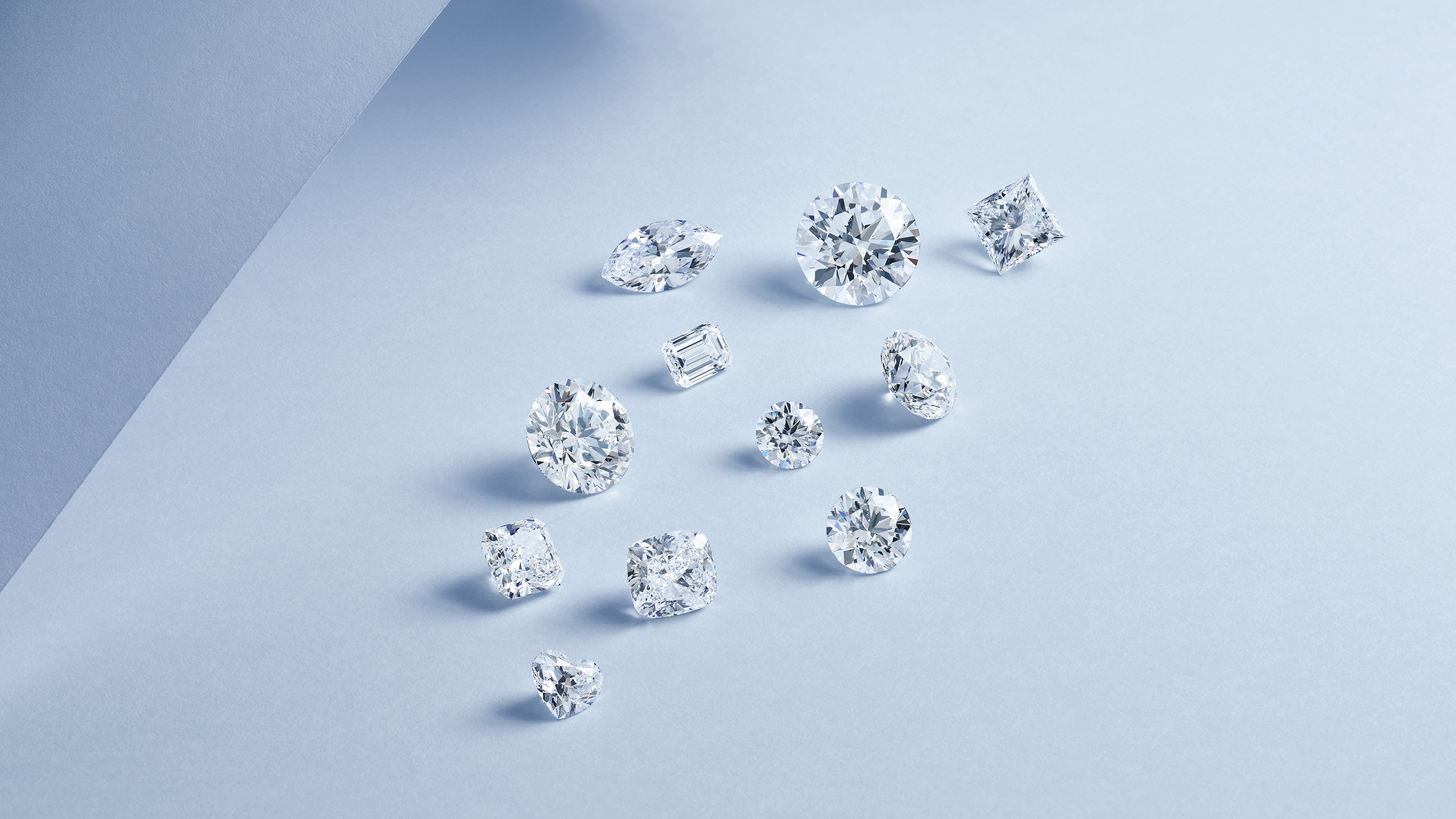
CUT, CLARITY, COLOUR AND CARAT
The Four C of Diamonds
At Bucherer Fine Jewellery we strive to set the highest of standards. Since 1888 we have been at the forefront of fine jewellery craftsmanship, curating the highest quality components to produce exquisite pieces. From selecting the most prestigious of precious materials, to displaying creative flair and finish, our legendary artisans fuse expertise with artistry to deliver the very best of Bucherer Fine Jewellery. Goldsmiths and gemstone setters skilfully transform gemstones into elegant pieces of jewellery. The value of a diamond is determined by four quality criteria, also known as the four Cs – cut, clarity, colour and carat.

FROM RAW STONE TO MASTERPIECE
Cut
The most important factor of the four Cs is how the diamond is cut. The colour, clarity and carat of the diamond are predetermined; but it only displays its full brilliance once it is cut to the right proportions. This depends primarily on the expertise and experience of the diamond cutter, who can turn a raw diamond into a work of art. The type of cut is determined by the natural shape of the raw diamond. Brilliant diamonds are only those that have been cut into a round shape with at least 57 facets. Grading the cut quality of a diamond also takes into account the symmetry of the facets, the proportions, the size of the table (the largest of the 57 facets) and the total depth of the diamond. A good cut releases a diamond’s inner sparkle. The light is reflected from one face to the other and reflects back out through the surface of the stone.

FROM FLAWLESS TO IMPERFECT
Clarity
Clarity is another quality criterion for grading diamonds. Diamonds can achieve exceptional levels of sparkle like no other gemstone. A diamond is only considered flawless if there are no inclusions whatsoever. Classic inclusions are small crystals such as garnets, spinels or peridots that get trapped in a diamond as it forms. A smaller diamond can even be an inclusion within a larger one. If there are too many inclusions or if they are too large, they can prevent the light from fully reflecting off the surface of the diamond. In addition to inclusions, diamonds can exhibit stress cracks, breaks and different growth characteristics that come into play when assessing their clarity. A diamond can only be termed “internally flawless” if internal features such as inclusions can no longer be detected even by experts at 10-fold magnification. Flawless diamonds (if = internally flawless) are extremely rare.

FROM D TO Z
Colour
The third quality criterion of the four Cs is colour. Experts in grading diamonds rate the colour of the stones on a scale from D to Z. Specialist retailers refer to diamonds with a colour grade from D to H as white diamonds. From grade I, the stones have an increasingly yellowish hue. Although diamonds are usually encountered in their transparent form, a stone of flawless transparency is very hard to find. Even uncut diamonds have yellowish hues. Fancy colour diamonds are just as rare as flawlessly transparent diamonds. They have colours outside of the D to Z scale and come in all shades – red, orange, yellow, green, blue, purple, brown, grey and black. For the casual observer, a higher colour grade is the key factor. For example, even the untrained eye can distinguish between a D- and G-grade colour, while the clarity of a diamond can only be determined under 10-fold magnification. This is the only way to determine the presence of inclusions and other factors that inhibit clarity.

HOW MUCH A DIAMOND WEIGHS
Carat
The weight of a diamond is measured in carats. The weight is usually precisely indicated to two decimal places. The abbreviation for carat is “ct”. One carat (1.00 ct) weighs 0.2 grams. Two-carat diamonds are much rarer than the one-carat stones, they are considered to be more precious. However, the size of a diamond only increases its value when the other quality criteria are met. This happens very rarely, because multi-carat stones are more likely to have small inclusions. For the casual observer, a higher colour grade is the key factor. For example, even the untrained eye can distinguish between a D- and G-grade colour, while the clarity of a diamond can only be determined under 10-fold magnification. This is the only way to determine the presence of inclusions and other factors that inhibit clarity.

Certificates
We only source our diamonds from the most trusted suppliers and under stringent conditions. We rely on certificates issued by the GIA (Gemological Institute of America) and the knowledge of our experienced diamond experts to grade diamonds according to the quality criteria described here – the four Cs. Larger diamonds are accompanied by a GIA or Bucherer certificate.
